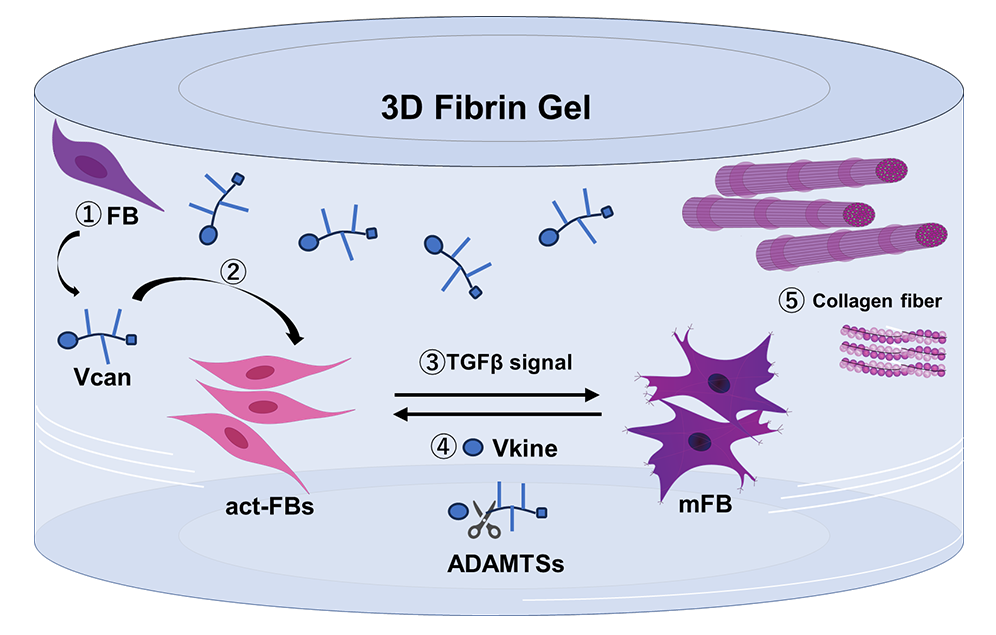論文

Nushrat Jahan, Shamima Islam, Karnan Shivsundaram, Akinobu Ota, Munekazu Naito, Junpei Kuroda, Hideto Watanabe
Role of versican in extracellular matrix formation: analysis in 3D culture
American Journal of Physiology Cell Physiology (in press), (2025).
DOI: 10.1152/ajpcell.00495.2024
解説
Three-dimensional (3-D) cell culture creates an environment that allows cells to grow and interact with the surrounding extracellular framework. Versican plays a pivotal role in forming the provisional matrix, but it is still unclear how this proteoglycan affects the formation of the extracellular matrix. Here, we established a 3-D culture system using fibrin gel, which enables a long-term culture up to a month. With this system, we characterized fibroblasts obtained from the newborn knock-in homozygotes, termed R/R, expressing a disintegrin and metalloproteinase with thrombospondin motif (ADAMTS)-resistant versican and wild-type mice. R/R fibroblasts showed higher levels of versican deposition than wild-type, demonstrating that the initial ADAMTS-cleavage site is involved in versican turnover. These fibroblasts exhibited faster proliferation and myofibroblastic differentiation, concomitant with higher levels of transforming growth factor β-signaling. R/R fibroblast culture had higher deposition levels of fibronectin, type I and V collagens, and fibrillin-1, especially at the late stages of culture. These results suggest that versican expressed by dermal fibroblasts facilitates the extracellular matrix formation, at least by affecting fibroblast behavior.
We established a 3-D-culture system useful for analyzing fibroblast behavior and matrix formation. The initial cleavage site by ADAMTSs in versican core protein is mainly involved in versican turnover. Accumulating versican facilitates fibroblast proliferation and myofibroblastic differentiation in an autocrine or paracrine manner. Accumulating versican promotes the deposition of fibronectin and collagens.
